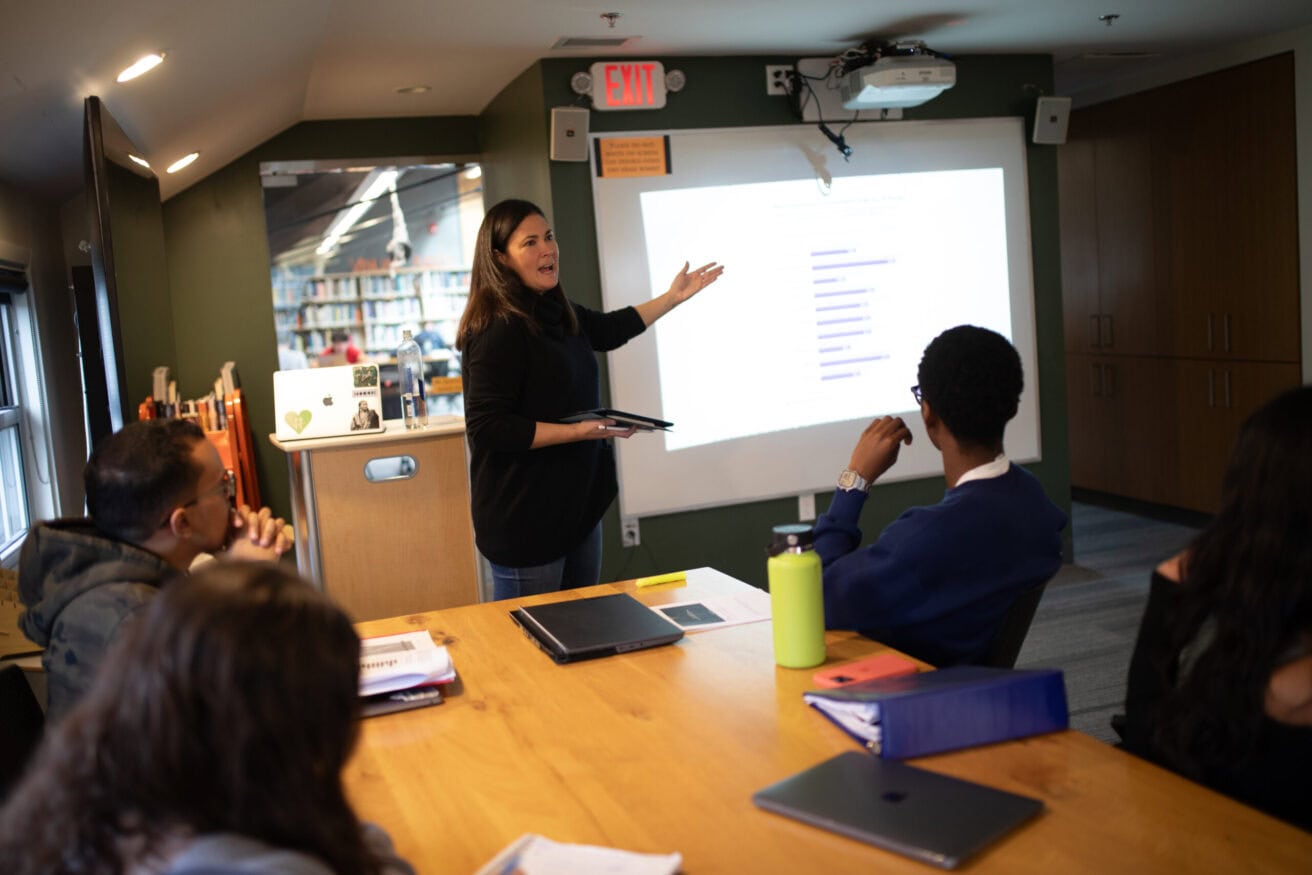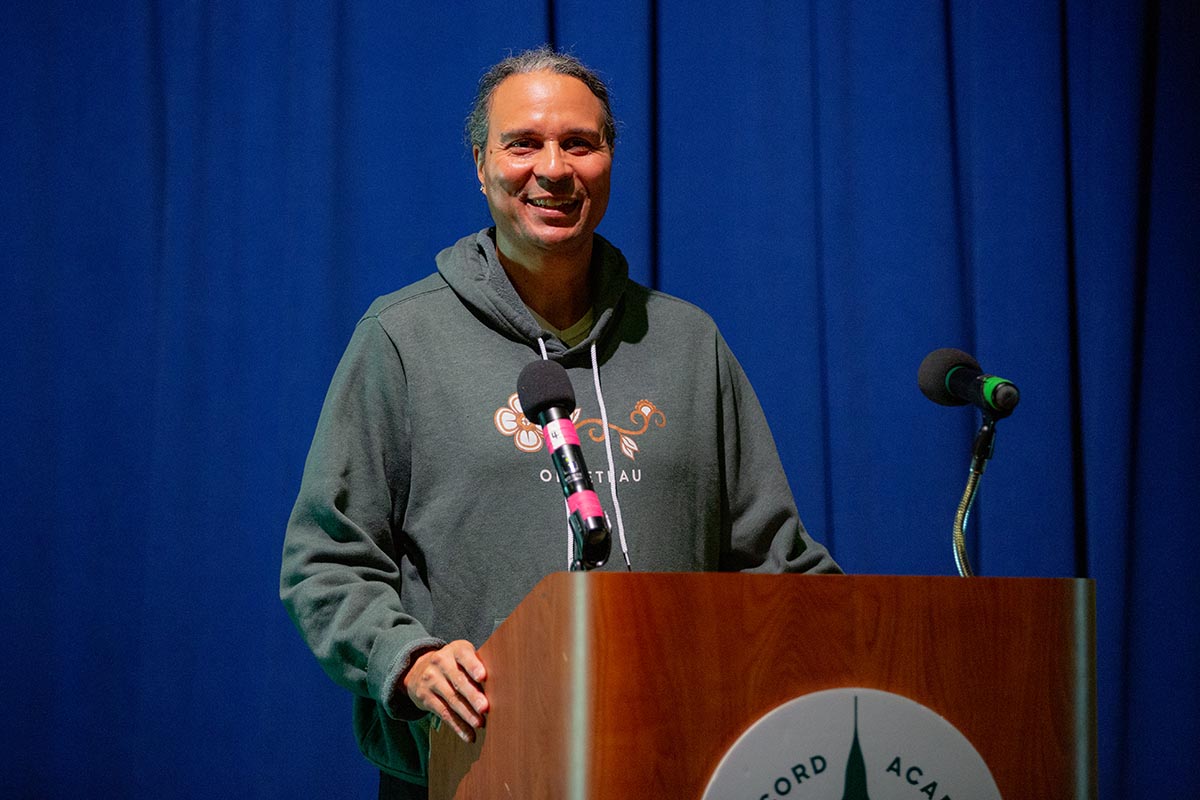Calculating Compassion

Through data storytelling, CA students translate statistics into action
Desiree Sheff’s class Mathematics of Social Justice: Race and Gender in Sports analyzes the intricacies of striving for equity in athletics—and beyond.
“I wanted to create a course where students felt like they could learn statistical literacy and data storytelling through the lens of issues that might resonate with them as members of the community who carry the torch for social justice and equity,” says Sheff, who joined the Mathematics Department in 2021. “I want them to feel confident, when faced with a graph or a data table, that they can be proficient with the language necessary to communicate the important aspects of the findings.”
“I’ve never had a course quite like this,” says Grace B. Kalere ’24, who took the class in the fall semester. The curriculum covers diverse topics such as policing bias, resistance and protest, judicial activism and justice, equity and opportunity, sportswashing and human rights, and sports media and social justice.
One of Grace’s earliest assignments involved analyzing a report of police warning citations and arrests in Oakland, Calif., using chi-square statistical tests. Other projects have included using regression to create models for income inequality in athletics and the general workforce, and calculating Gini indexes to measure wealth inequality and the economic impact of athletics tournaments in various countries.
“Des focuses on storytelling,” Grace says. “That’s what she really wants the students to be able to do. Having a narrative that accurately reflects the story the data is telling is key, as well as thinking about the characters and the setting.”
Students also incorporate qualitative data into their assignments. In one unique project, students researched the cultural impact of athlete advocates, including Muhammad Ali, Billie Jean King, and Naomi Osaka, and presented their findings.
To help students visualize the concept of social resistance, Sheff created a floor grid representing four distinct types: transformational, conformist, reactionary, and self-defeating. Students stood on the side of the grid they felt best aligned with each athlete advocate, substantiating their positions with thoughtful insights.
The Mathematics of Social Justice course also teaches CA students to translate numbers into action to support their community in meaningful ways.
Grace is passionate about applying the mathematical concepts he has learned as the president and founder of the new CA club Catalysts for Change, a Human Rights Watch Student Task Force chapter. Through the club, he networks with changemakers and political representatives and has organized on-campus events, including a voter registration drive. In the future, he hopes to pursue a career in public policy.
“The integration of real-world applications within the course sustains my engagement with the material,” Grace says. “It’s what makes it exciting to go to this class every day.”


